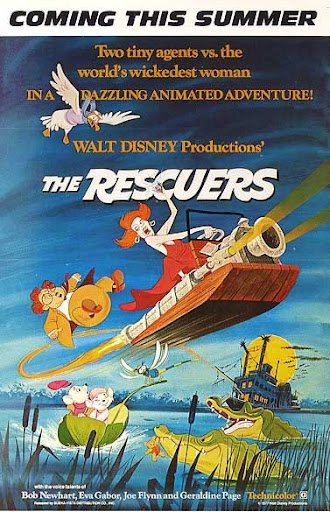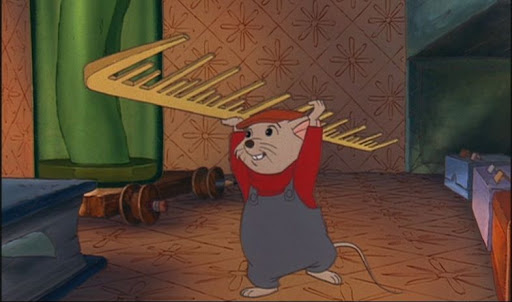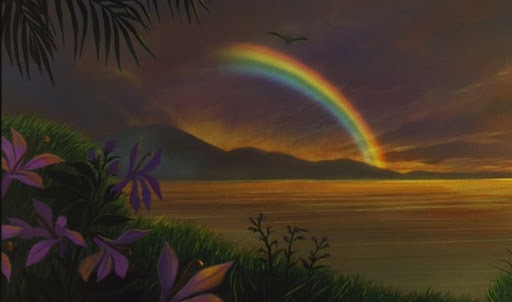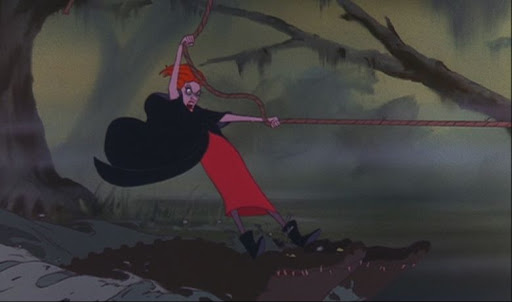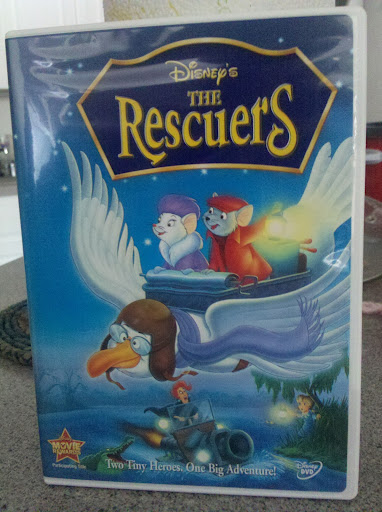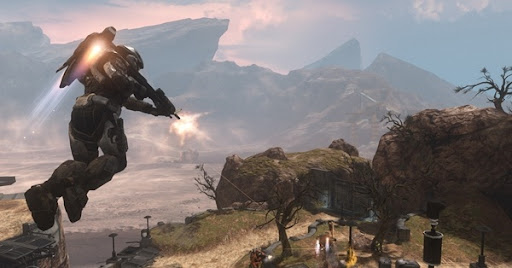As unusual as it is beautiful, Fantasia is unlike anything else in the Walt Disney Feature Animation canon (except, of course, its sequel), or any other animated film I’ve ever seen. It is, in essence, a series of music videos, but with Beethoven and Tchaikovsky in lieu of Usher and Lady GaGa, connected not with a narrative of any sort, but with song introductions and explanations, similar to what may be found at a concert.
This is just as well; Walt Disney intended for Fantasia to be cinematic event, and its original title was The Concert Feature. It enjoyed a chilly reception during its original release, and wouldn’t attain popularity until it reached stoner movie infamy in the 60’s and 70’s, when dudes used to turn on and go see it, lying on the floor the whole time. Since then, however, Fantasia has since reached bona fide classic status, and is regarded as an artistic achievement.
This is all well and good, but is it entertaining? Myself, I love this movie. Granted, it’s nothing that I’ll want to watch when I’m having Movie Night with friends, but it’s one of my favorites to watch when I’m tired or in need of cinematic comfort food.
Fantasia is broken up into eight segments, each with an in-between segment from radio personality Deems Taylor. Taylor introduces each selection and provides a little bit of background information, tidbits like the piece’s themes or performance history. The songs are as follows:
Toccata and Fugue in D Minor – Johann Sebastian Bach
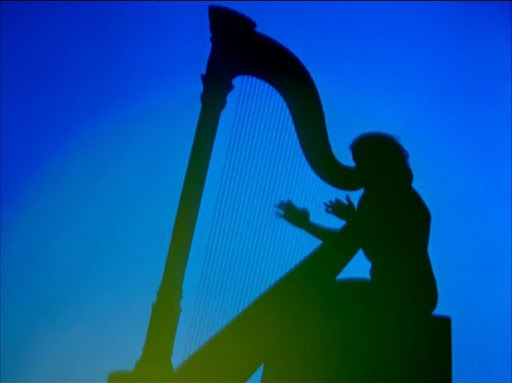
Described by Taylor as “music for its own sake,” the Toccata and Fugue (aka, that one ominous-sounding organ song that Captain Nemo plays in 20,000 Leagues Under the Sea) is a series of abstract visuals timed to the music. The piece begins with the orchestra playing the song, backlit by several multicolor lights. After a few minutes, the visuals segue into floating violin bows, rolling hills, and steam updrafts.
I won’t lie: as a kid, Toccata was not an essential part of the viewing experience, and I remember either fast-forwarding through it, or severely zoning out until it was done. Since then, it has grown on me, but more because of my appreciation for the song, rather than the animation itself. Sure, the whole “abstract animation” thing is pretty neat, but I place it further down on my list due to its plotless nature, though it's still quite enjoyable. A rocket start it isn’t, but instead settles the viewer in and sets expectations of what’s to come.
The Nutcracker Suite – Pyotr Tchaikovsky

The Nutcracker Suite is a series of excerpts from the ballet, rather than the whole thing. Its pieces include:
- “Dance of the Sugar Plum Fairies”
- “Chinese Dance”
- “Dance of the Reed Flutes”
- “Arabian Dance”
- “Russian Dance”
- “Waltz of the Flowers”
Rather than retelling the ballet's story, Nutcracker goes with a general nature theme; its performers range from goldfish, to dancing lilies, to little, shuffling mushrooms (and damned if they aren’t the cutest little buggers in the entire picture).
For my money, this is my favorite segment. I love the variety brought on by having six different songs in the same piece, and Nutcracker is host to several of Fantasia's prettiest bits of animation, such as the frost-dancing fairies during the “Waltz of the Flowers” sequence. The tunes in Nutcracker are also some of my favorite pieces in all of classical music, which can hardly be a bad thing.
The Sorcerer’s Apprentice – Paul Dukas
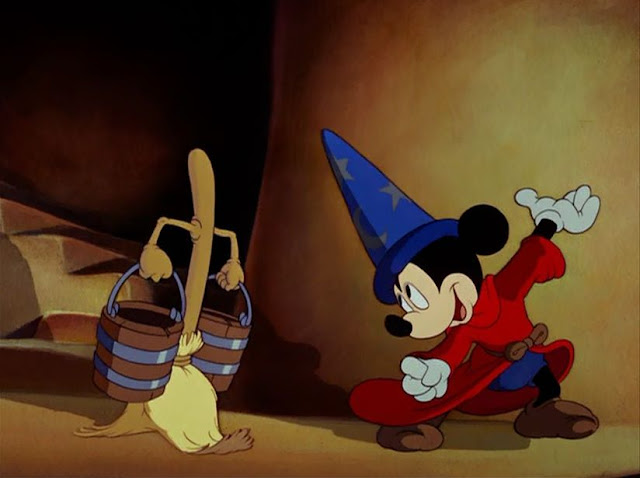
Arguably the most famous piece in Fantasia, The Sorcerer’s Apprentice is the one that kick-started the entire project. At this point, everyone is familiar with Sorcerer’s story: Mickey Mouse is a sorcerer’s intern, carrying water to fill his boss’s cauldron. Boss man goes to bed, and Mickey decides to enchant a broom to carry water for him. Unfortunately, Mickey can’t figure out how to make the broom quit, so he does what anyone would do under the circumstances: go to town on it with an ax until it stops moving. The broom, in a display of zombie-like resilience, reforms itself out of its splinters, and continues to flood the place with water until the boss returns, putting a stop to the chaos and giving Mickey a good whack on the ass for his troubles.
Apprentice was conceived as a short that would introduce Mickey’s new character design (he received, among other things, eyes with pupils in them), but the short ended up costing an incredible amount of money (something like $125,000; the most expensive short produced before that, The Three Little Pigs, was $62,500). Wanting to make the most of his investment, Disney, at the suggestion of Fantasia composer Leopold Stokowski, expanded the project to include the rest of the segments.
Though I would agree with some of the folks that say it’s overrated, I love Sorcerer’s Apprentice. As a kid, I loved Mickey Mouse, and Sorcerer is a damn fine Mickey Mouse cartoon. Hearkening back to when he was a rambunctious, well-meaning scamp, Mickey in Sorcerer is a far cry from his dull, sanitized image that audiences know today. Not only does he try some mischief he knows he probably shouldn’t, he tries to solve his problem by (again, I’ll repeat for effect) going to town on said problem with an ax until it stops moving. Suppose, instead of a broom, it had been a particularly bothersome insurance agent. Puts the short into a different light, doesn’t it?
The Rite of Spring – Igor Stravinsky
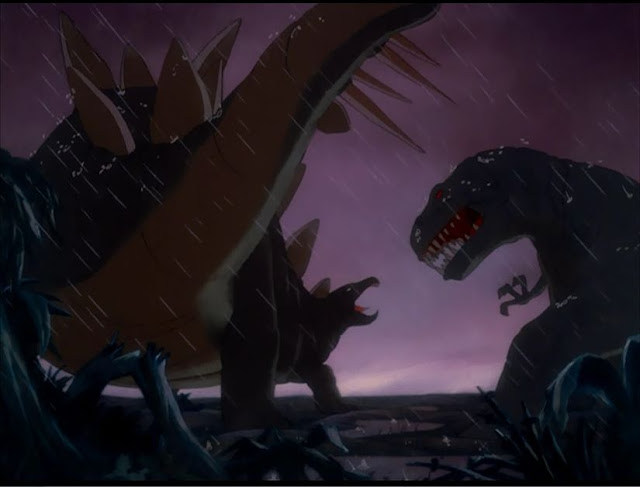
Notorious for its harshness and difficultly, The Rite of Spring is the lengthiest (and likely most ambitious) piece in the film. It tells no less than the entire story of evolution, from before life began, and all the way up through the dinosaurs. The Rite of Spring is perhaps the pokiest of Fantasia’s eight works, with many slow, less-eventful stretches in both animation and music. Despite all of that, I still like it; it lacks cohesion, and is sometimes uneven, but the lulls and dynamics in both music and animation help set up for the more exciting bits (like the sweet dino-on-dino action that acts like 1940’s Jurassic Park).
The Rite of Spring is one of the most fascinating pieces in all of Fantasia. True, there are some definite lulls in the experience (the segment begins by zooming in from waaaayyyy far away and goes for almost three minutes, leading me to believe the viewer starts the piece sitting next to God Himself), and it goes on for quite a while. However, I think I like Rite because of these flaws, and because it’s so unlike any piece of animation put out today; it’s not a series of hyperactive, quick-cut pop culture references, and I find that sort of thing alarmingly refreshing (The Aristocats also benefited from my “Oh thank goodness, it’s not Hoodwinked” gratitude).
Pastoral Symphony – Ludwig Von Beethoven

The Pastoral Symphony was written by Beethoven as a tribute to the countryside of his homeland, Austria. Of course, what better way to convey a work of music about Austria than to give it an Ancient Greek setting? Pastoral is one of the more cartoon-y pieces of Fantasia, showing the audience an average day on Mount Olympus; unicorns and satyrs gambol about playing music and dancing, centaurs do their best to find a mate, and Dionysus (called Bacchus here) hosts an Ancient Greek kegstand. This all goes to hell when Zeus shows up to eff with the mortals; he showers the party with lightning bolts, before getting bored and going back to bed.
I find it interesting that the two most gender-divisive pieces in the film are back-to-back. Growing up, I never cared for the Pastoral sequence—let’s face it, an eight-year-old boy isn’t going to have much use for flying Greek ponies. Conversely, my friends who are girls absolutely loved those Greek ponies, but were bored to tears during The Rite of Spring. This, ladies and gentlemen, represents the difference between boys and girls: ponies vs. dinosaurs.
The Dance of the Hours – Amilcare Ponchielli
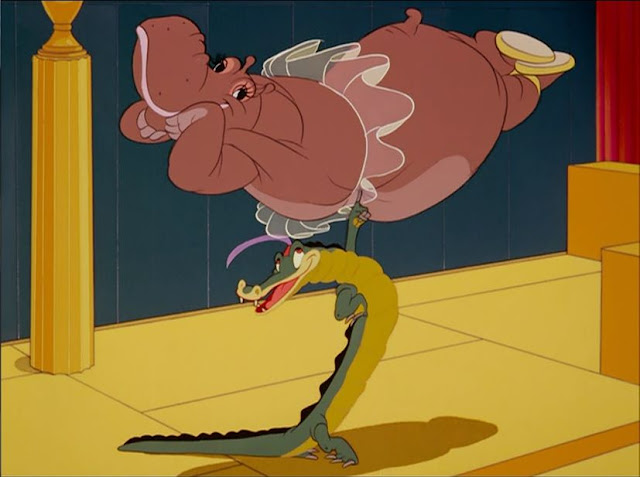
If Pastoral was one of the more cartoon-y bits in Fantasia, Hours is easily the closest the movie gets to Looney Tunes. A much needed laugh break, Hours is an interp of Ponchielli’s famous ballet (trust me, you’ve heard it; does “Hello muddah, hello faddah, I am here at Camp Granada” ring a bell?). The Dance of the Hours, like its name suggests, is a dance about the different times of day: the morning, where the dancers are ostriches, the afternoon, with dancing hippos, the evening, with elephants, and the evening, featuring sinister, dancing alligators.
The energy in this one is absolutely manic, especially near the end, and the whole thing is plain silly, brushing aside the stuffy atmosphere of The Rite of Spring and The Nutcracker Suite. Elephants dance about in surprisingly graceful fashion, ostriches fight over a bunch of grapes, and the alligators all but throw their hippo partners around during the finale.
Night on Bald Mountain – Modest Mussorgsky

Bald Mountain represents some of the out-and-out freakiest animation to be found in the Disney canon. Demons and other ghoulish nasties fly two and fro, shrieking and causing chaos. A town transforms from a provincial hamlet to a wicked harbor for spirits of the night. And the whole thing is presided over by Chernabog, a nocturnal devil who is clearly having the time of his life.
Aside from the appeal of watching dark Slavic deities torment other demons… well, no, that is the appeal. Of course, a genuine horror animated segment was unheard of from Disney at the time (and since), and it’s a great piece of scary, occult-looking animation that bears watching on Halloween sometime.
Ave Maria – Franz Schubert

A companion piece to Bald Mountain, Ave Maria shows Chernabog and his ghostly crew being chased off by the sound of church bells, and follows a long procession of monks through a forest. Though very pretty, it ends the film with a whimper instead of a bang, making the segment seem like an anticlimax. That said, it still is a fine piece, and provides great contrast to the absolute darkness of the previous segment.
Similar to how I used to skip Toccata in order to get to the active stuff, I seldom, if ever, made it to Ave Maria when I was growing up. Mostly, it’s because the film is so incredibly long—two hours is nothing to sneeze at for a kid, especially for a movie as episodic as this one. Anyways, Ave is a fine sendoff.
The trouble with Fantasia is I can’t quite explain why I like it so much. Much of the film is hardly what you’d call “exciting” or “hilarious” in the way you describe other movies. True, it has bits of comedy, bits of action, and general nuggets of entertainment sprinkled throughout, but its lack of a cohesive narrative (as well as dialogue) don’t do much to temper the notion that we’re not watching a movie, but instead having an experience.
It is fortunate that Fantasia is not nearly as pretentious as this last statement makes it sound. It is also fortunate that the experience is so damn entertaining, and so comforting. Perhaps I’m a minority, but I don’t see the film to be quite as stuffy as its detractors. With Fantasia, viewers can put in as much or as little investment as they want into the film, with equal incentives for both. On the surface level, it’s beautiful artwork over beautiful classical music, making it easy to drop in and drop out of paying attention; here is an ideal movie to have on while cooking, doing homework, etc.
However, Fantasia rewards active viewers with stunning animation from Disney’s Golden Age. In particular, the effects animation in Fantasia is a thing of wonder: the film absolutely fills the corners with small, atmospheric details, like the dewdrops during the “Dance of the Sugarplum Fairies” part of Nutcracker; or the sloshing, splashing water effects in The Sorcerer’s Apprentice; or the sparks and lava bursts in The Rite of Spring.

Fantasia is bursting at the seams with beautiful effects and small touches.
Fantasia also has an absolutely killer soundtrack, representing from some of the biggest names in classical music (Bach, Schubert, Beethoven, etc.). Moreover, the selections are wonderful, pulling from pieces of music that many have at least a passing familiarity with (though if you were familiar with the melody of The Rite of Spring prior to watching the film, you are truly more cultured than I). I used to listen to this soundtrack at least twice a week at work, and I’m still not sick of it.
Though it sounds about as pretentious as calling Citizen Kane one of my favorite movies (it’s not, by the way, but you should see what it actually is), I consider Fantasia to be one of my absolute favorite Disney movies. To be precise, it’s my second favorite, though I’m holding off doing my number one until the very end of the series (which, at this rate, will be in 2014). Similar to a favorite album, Fantasia’s appeal isn’t in its cinematic thrills, but in its nuances, and it gets better and better every time I watch it.
Top 3 Songs:
- “The Nutcracker Suite”
- “The Sorcerer’s Apprentice”
- “The Rite of Spring”
Favorite scene:
- The “Waltz of the Flowers” segment of The Nutcracker Suite (there’s something thrilling about the way those ice skating fairies careen about)
Favorite character:
- Hop Lo (that ‘ittle bitty mushroom guy from “The Chinese Dance” segment of Nutcracker)
The Jar Jar:
- Bacchus and his donkey (they function as a unit)
How I Watched It

Fantasia was released on Blu-ray back in November, and this is how I recommend watching it. The visuals are an absolute explosion of color (natch), making each shadow, sparkle, and splash look its very best. The film also sounds pretty good; Fantasia was the first major film to use stereophonic sound, and though it’s about 70 years old at this point, it still sounds great on Blu-ray.
A quick note on this edition of Fantasia. The version of the film found on this disc is the original 1940 “Roadshow” edition, meaning that it’s about as close to the original film as can be found nowadays. When Fantasia was first released onto home video, it was edited slightly; each of the eight pieces (and the little bit with the Soundtrack in the middle) were left fully intact, but the between-song segments were cut short. This Blu-ray edition restores everything, almost to the film’s detriment; the bit where the orchestra exits for intermission has been put back in, and Deems Taylor’s narrative exposition on The Rite of Spring and the Pastoral Symphony borders on almost two minutes. Still, for completists, this edition of Fantasia will be more than sufficient.
Fantasia comes with several amusing extras. While there’s no true Making Of featurette, it features no less than three (3!) commentary tracks. The first is a new track from Disney historian Brian Sibley, which is nice and expository, though a bit dry. The second and third are taken from the previous DVD release of Fantasia. One is from Roy E. Disney, animation historian John Canemaker, conductor James Levine, and film restoration manager Scott MacQueen; everyone involved offers their take on the film in places, giving the track some nice variety. The last track is a compilation of archived interviews with Walt Disney about Fantasia, as well as stenographed notes from story meetings.
Also included is a featurette on a recently-discovered notebook from one of the Disney animators, which details some of the creative tricks the animators used to capture Fantasia’s trickiest shots. Last is a screen-padding extra called DisneyView, which fills the sides of the movie with new artwork.
